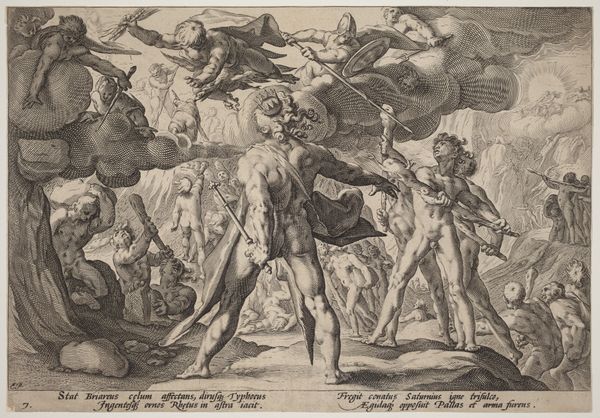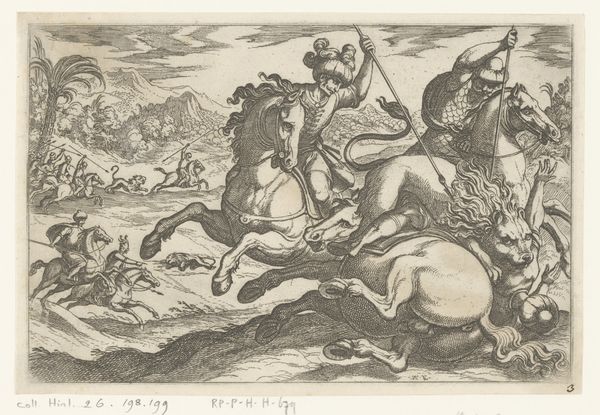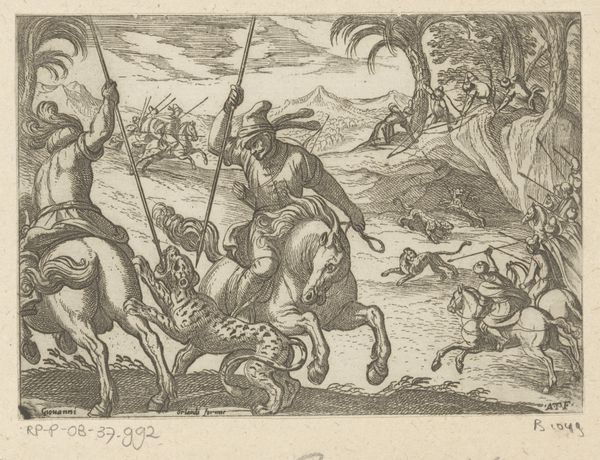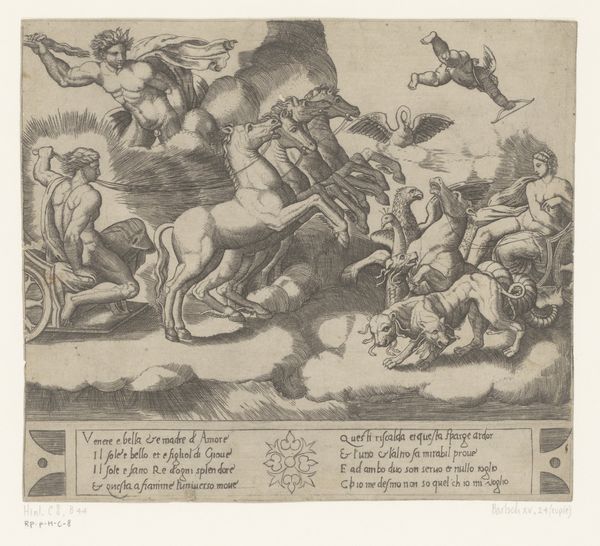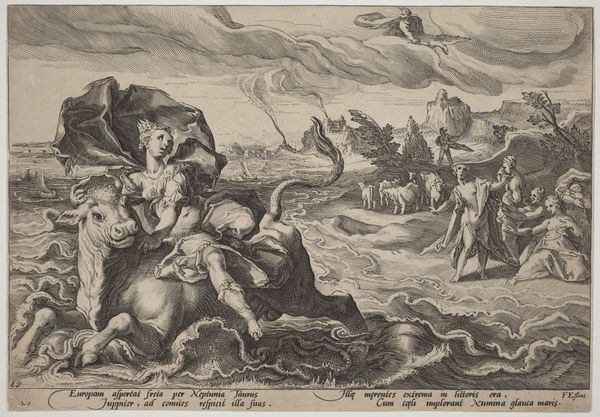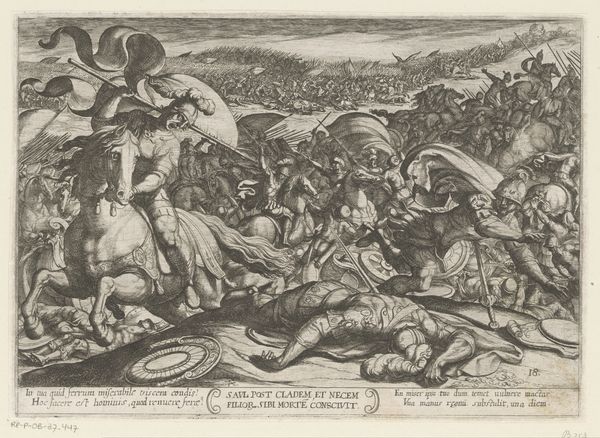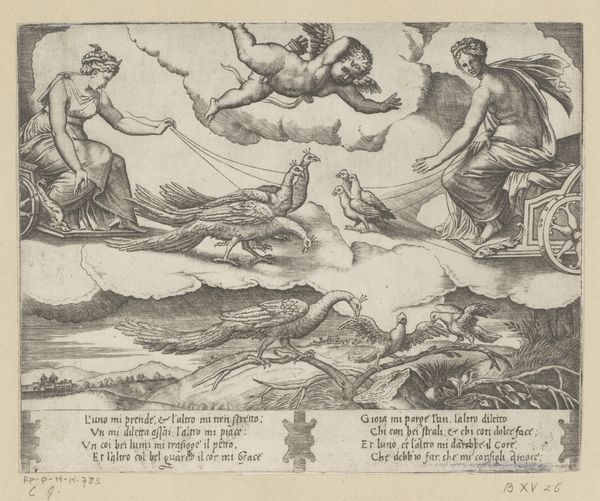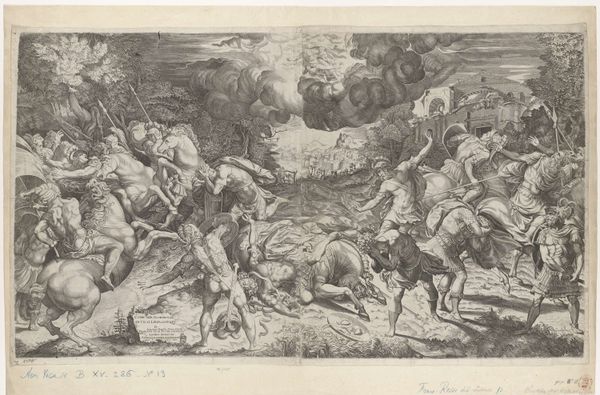
print, engraving
#
narrative-art
#
baroque
#
pen drawing
# print
#
pen illustration
#
pen sketch
#
figuration
#
ink drawing experimentation
#
pen-ink sketch
#
pen work
#
history-painting
#
engraving
Dimensions: height 220 mm, width 281 mm
Copyright: Rijks Museum: Open Domain
Charles David made this print, Hercules subduing the Cretan bull, sometime between 1590 and 1639. Through his skillful use of engraving, David captures a dramatic scene from classical mythology. Prints like this one from the Dutch Golden Age existed in a complex relationship with the free market. The increased urbanization and literacy rates created a demand for art outside of the traditional patronage system. Prints allowed artists to reach a wider audience and disseminate their ideas more broadly. This print also references the tradition of the Northern Renaissance, recalling artists like Durer and his prints based on religious and classical themes. But the art market also served political and social functions. For instance, the depiction of Hercules as a symbol of strength and virtue could be interpreted as a commentary on contemporary political events, like the Dutch revolt against Spanish rule. To fully understand this print, we might examine its place within the broader context of the Dutch art market, as well as its relationship to the artistic traditions of the Renaissance. Doing so allows us to appreciate the social and cultural forces that shaped its creation.
Comments
No comments
Be the first to comment and join the conversation on the ultimate creative platform.


